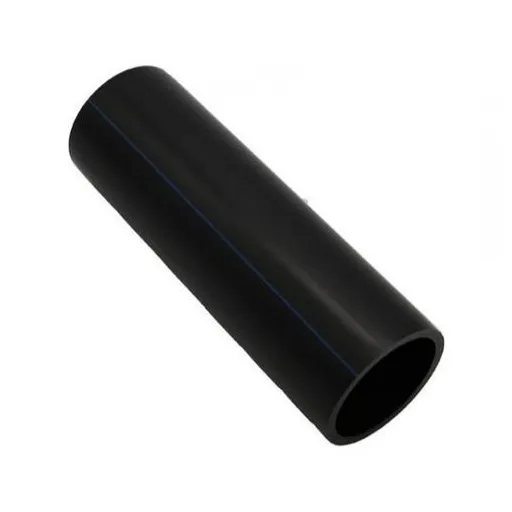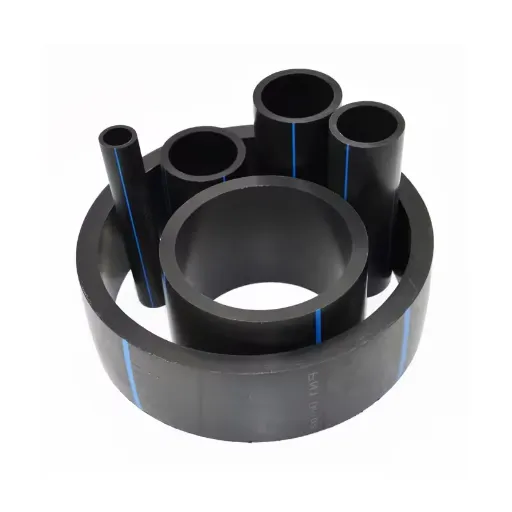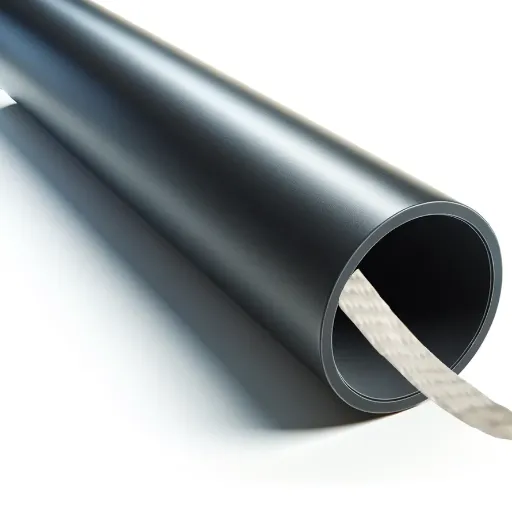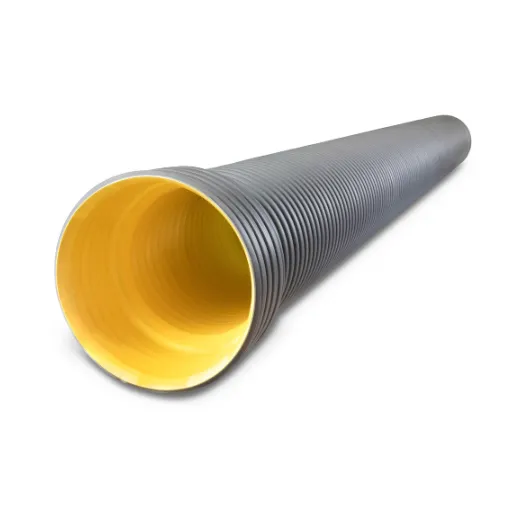Over the years, HDPE pipelines have become a feature in modern infrastructure, particularly because they provide protection, flexibility, and reliability. It’s mentioned that black HDPE is paramount among the different ways that HDPE has been used in water supply, gas distribution, among others. But what really makes black HDPE so special? Why has it come into so common usage, and what should be considered before putting it to use in a project? This article cuts the deep into black HDPE pipelines, looking into their characteristics, key benefits, and drawbacks, and common uses. This guide is also intended to further assist contractors, engineers, or anyone interested in modern materials on everything they need to know about black HDPE pipelines.
Introduction to HDPE Pipes
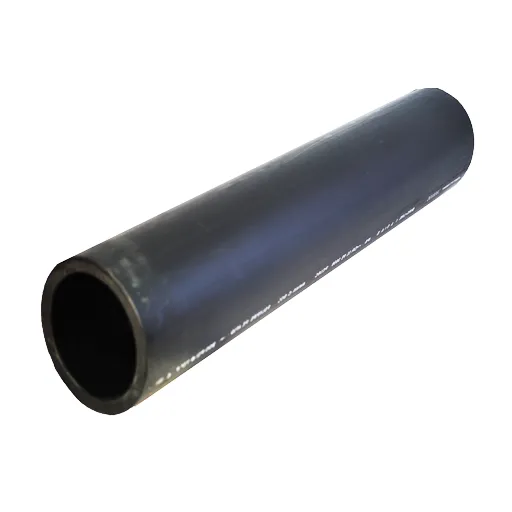
What are HDPE Pipes?
HDPE pipes stand for High-Density Polyethylene Pipes and are plastic pipe systems that offer strength, durability, and flexibility. Designed to resist high pressures and environmental stresses, these pipes of high-density polymer find application in many fields. HDPE pipes resist corrosion, which gives them an edge over traditional metal pipes that corrode with the passage of time.
The pipes are flexible, allowing them to be bent and routed around obstacles easily during installation, thus decreasing fittings and joint requirements. Formerly, a lesser number of joints would mean the least chance of getting leaks, which enhances system reliability. Also, they are best when making their transport and handling easier compared to steel, concrete, and more types of heavy materials.
These pipes are used in many industries, for example, water distribution lines, gas pipeline systems, sewage systems, and industrial applications. Long working life with hardly any maintenance is what makes it a cost-effective option while working on any project requiring reliable and durable overhead piping works. In addition, HDPE ducting is an environmentally friendly option, as these sometimes can be recycled at the end of their service life.
History and Development of Polyethylene Pipe
The history of constructing polyethylene pipes dates back to the mid-20th century, following crucial developments in polymer chemistry. High-density polyethylene (HDPE), was synthesized in the 1950s through the innovative method of Ziegler-Natta polymerization, creating strong, durable, yet lightweight materials. This method enabled polyethylene pipes to slowly replace conventional materials such as metals and concrete in varied applications.
Polyethylene pipes gained fame in the 1960s as useful materials in water distribution and in the transmission of natural gas due to corrosion resistance, flexibility, and ease of installation. Engineers and manufacturers recognized the advantages that these pipes offered over the conventional means and found it fit to widely adopt them. With time, technology would improve the production technique and, in turn, enable further performance enhancements of the polyethylene pipes and their use in high-pressure systems.
Today, polyethylene pipes comprise an essential element in modern infrastructure. Highly cost-effective, resilient, and environmentally friendly, they enjoy great value. Efforts are being directed towards improving their design and making them suited for an ever-greater range of applications so that they remain an innovative and viable solution for piping systems the world over.
Key Properties of Black HDPE
One would mention some etchings for Black High-Density Polyethylene (HDPE) because these are special aspects that make it a versatile and dependable industrial material. First, it is extremely resistant to chemicals and corrosion. Thus, black HDPE can be exposed to a wide variety of chemicals such as acids, alkalis, and salts without being affected. It forms an ideal material in industrial and environmental applications.
The other property selection for black HDPE would be an excellent strength-to-density ratio. The material has a great degree of durability yet is thin and light in weight. This makes it able to withstand stresses without fracturing or breaking. Therefore, it is highly recommended to be used in piping systems capable of withstanding high pressures where physical impacts could occur during installation and use. The other advantage is its low-density nature; it makes transportation and installation easier as cost factors.
Lastly, as carbon black is incorporated into black HDPE, it also has excellent resistance against UV radiation. Therefore, the material is preferred in outdoor usage, which needs to have quality for prolonged-exposure to sunlight. Its long life, as well as its recyclability, assist sustainability efforts, thus making it favored by industry in several applications.
Advantages of HDPE Pipes
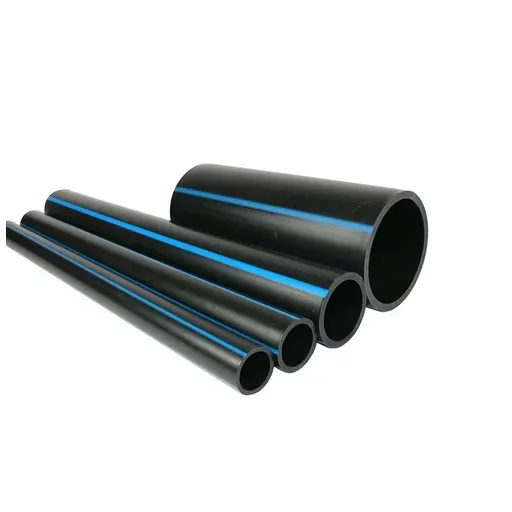
✓
Corrosion Resistance
Another very important advantage of corrosion resistance being offered by HDPE pipes is that they do not corrode. Unlike metal pipes, HDPE pipes cannot be chemically reacted with corrosive substances normally found in the soil or water. Thus this characteristic assures that the HDPE pipes have longer life service under extreme conditions. Five corrosion resistance criteria are provided below:
- 1. Chemical Resistance
HDPE pipes have excellent resistance to numerous chemicals ranging from acids, alkalis to salts and are hence used in industrial and agricultural applications. - 2. No Internal Corrosion
HDPE pipes, in contrast to metallic pipes, do not rust and hence provide for consistent capacity for flow in the pipeline with the passage of time. - 3. Resistance to Biological Growth
HDPE pipes are resistant to biological fouling such as algae or bacterial growth, which would otherwise cause blockages or performance issues in other pipe materials. - 4. Corrosion Resistance Due to Electrochemistry
A non-metallic compound purveyed by mother nature, HDPE pipes have in built resistance to electrochemical processes generally occurring due to stray currents or galvanic corrosion in metallic pipe lines. - 5. Long Life
They actually do not get affected by environmental corrosion and hence, under adverse environment of salty or acid-bearing soils, the HDPE pipes will actually outlast their other counterparts by decades.
These features make HDPE pipes dependable and low-maintenance applications.
✓
Durability and Longevity
The highlight of HDPE pipe manufacture is its durability and long lifespan. These were formerly, and still are, apt for managing applications in both industrial and municipal sectors. These are presented with a slew of attributes and data that can support their application and maintenance in varying conditions. Five key attributes that lend HDPE pipes extra durability and long life are:
- 1. Corrosion Resistance
Unlike metallic pipes, HDPE pipes cannot rust or corrode, thereby performing reliably even in the highly acidic, alkaline, or saline soils. - 2. Abrasion Resistance
HDPE pipes could withstand abrasive materials and fluids and so are applied in mining, slurry transport, and other heavy-duty type uses. - 3. Resistance to UV Degradation
Provided HDPE pipes are treated with adequate UV stabilizers during production, they shall withstand extended key sunlight hours without being degraded much, thus making it a good choice for outdoor applications. - 4. Flexibility and Impact Resistance
HDPE pipe-made materials possess superior flexibility and impact resistance, especially at sub-freezing temperatures, thus reducing the potential of cracking or bursting. - 5. Thermal Stability and Heat Resistance
HDPE pipes maintain the strength of their material under temperature changes and hence promise a long service life under the most vicious climatic conditons.
Therefore conversely they can work for 50 years plus that reduces regular periodic replacements or necessities of huge maintenance expenditure, so constituting a cost-wise competitor for quite a number of uses.
✓
Cost-Effectiveness and Flexibility
Due to their ability to offer the most cost-effective installation approach and the ultimate flexibility, HDPE pipes are favorite materials that find widespread acceptance all over the world. The major cost and adaptability factors include:
- Lower Installation Costs
Being a lightweight pipe, HDPE pipes are cheaper and easier to transport and install as compared to steel or concrete ones. This in turn reduces ongoing project costs. - Low Maintenance Requirement
HDPE pipes do not corrode, get scaled due to chemical action, or get damaged under other conditions, hence, maintenance cost is very minimal during their service. - Long Service Life
Deemed to serve for 50 years and more under standard operating conditions, HDPE pipes gain cost advantages by preventing replacement at any time. - Application Versatility
HDPE pipes are apt for potable water, gas distribution, sewage network plans, and industrial purposes. Hence, having other varieties of piping materials is not necessary. - Easy Handling and Customization
The flexible designs allow HDPE pipes to be easily manipulated around obstacles and further customized according to specific project needs. This ultimately saves on time and money in installation and operation.
Such characteristics make HDPE pipes a cost-effective and adaptable solution that can be considered for infrastructure projects, starting from the small scale to very large scales.
Disadvantages of HDPE Pipes
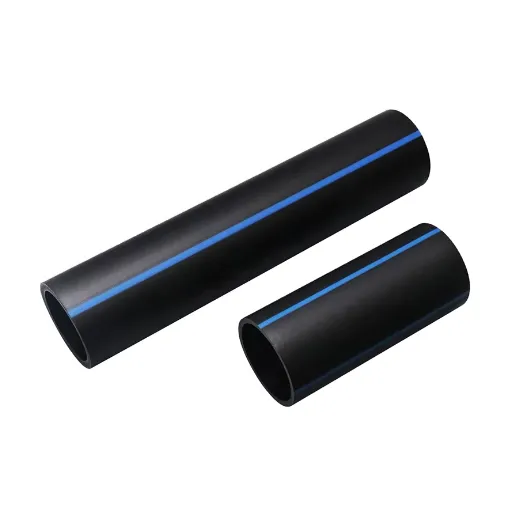
!
Potential Weaknesses in Extreme Conditions
- Thermal Expansion and Contraction Vulnerabilities
HDPE pipes succumb hugely to a temperature rise or fall, resulting in their expansion or contraction. These issues can cast problems of alignment or demand extra support systems in installations exposed to severe heat or cold. For example, HDPE pipes in places having high temperature variation will stretch to about 2% of its length for an increment of 10°F. - Decreased performance at high temperatures
While HDPE pipes may be highly durable under almost all environments, they perform less well under conditions of sustained high temperature exposure. The performance level of the high temperatures continual exposure above 140°F (60°C) hurts the material, thereby lessening its pressure resistance and life expectancy. - Brittleness at low Temperatures
HDPE pipes can turn brittle at really low temperatures, usually under -40°F (-40°C), thereby allowing cracking. This is a considerable risk in areas with harsh winters or extreme cold storage. - Vulnerability to UV Degradation
The material gets progressively degraded when it faces prolonged exposure to ultraviolet radiation coming straight from the Sun. Without requisite UV stabilizers or coatings, the surface of HDPE pipes may become cracked; they also get discolored, along with a decrease in their mechanical strength. - Low Resistance to Some Chemicals
HDPE is also resistant to a wide range of chemicals but exposure to concentrated solvents, hydrocarbons, and acids can weaken or deteriorate the piping materials. An example of a strong oxidizing agent that can cause stress cracking or structural failures is sulfuric or nitric acid.
Such consequences must be considered properly when designing projects for extreme or difficult environments to make sure an alternative or suitable measure is considered.
!
Environmental Considerations
- Recyclability
HDPE, when recycled, can give us a good reduction in the production of virgin plastic. End-of-life HDPE pipes may also be recycled to make new pipes or other plastic products, thereby putting less into landfills. - Carbon Footprint
It takes energy to produce and transport HDPE pipes, resulting in greenhouse gas emissions. Sourcing HDPE locally or using renewable energy during its manufacture can help reduce some of this impact. - Microplastic Pollution
Over long periods, HDPE pipes may disintegrate into fine plastic particles when exposed to certain environmental conditions and thus pollute microplastics. Proper protocols for waste management and recycling have to be adopted to address this concern. - Chemical Leaching
Improper disposal of HDPE pipes might lead to chemical leaching into the soil or groundwater. Better results can be achieved by periodic monitoring and regular implementation of proper disposal measures. - Resistance to Degradation
While HDPE’s resistance to environmental degradation is so useful during operational life, this resistance also translates into the inestimably long time this material can remain in the ecosystem, posing problems in waste management for a very long time if not properly managed.
!
Challenges in Installation
- Complex Joining Process
Had they been installed properly, HDPE pipes require specialized equipment and techniques such as butt fusion and electrofusion welding. Any of these methods can produce a weak joint that diminishes the integrity of the pipe when improperly done. Industry figures suggest that as much as 15% of HDPE installation failure is attributed to bad welding. - Temperature Sensitivity During Installation
HDPE material expands or contracts in different thermic conditions. An HDPE pipe, for instance, shrinks or expands 0.2% of its length for every 10 °C change in temperature. Hence, during installation, temperature must be controlled tightly to avoid warping and misalignment. - Trench Preparation Requirements
Digging trenches carries with it another notion of importance: that of HDPE pipe installation. The construction of trenches such as that shall require a laborious and time-consuming activity. The trench shall be prepared with a bedding material that is smooth, usually having granular soil or sand, to prevent point loads that could stress the pipe. Improper trench preparation and pipe deformation are primary reasons for pipe deformation after installation. - Logistical Challenges for Long Pipes
Long and flexible HDPE pipes are a nightmare to transport and handle, especially when working in an area that is inaccessible or confined. Extra bends and coils might further impose strain during storage or deployment, which can cause surface scratches or compromise the pipe integrity. - High Initial Cost of Installation Equipment
Being very capital-intensive, HDPE pipe installation tools are expensive; include fusion welding machines, which may not be worthwhile for use in small projects or installations held very occasionally. In this way, more costs are piled up, creating a financial barrier for a few contractors.
Applications of HDPE Pipeline Systems
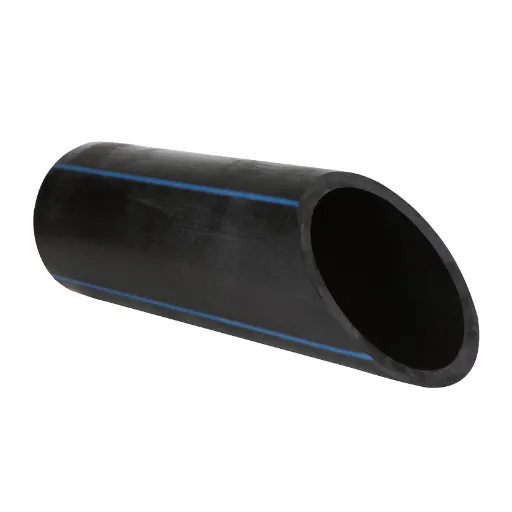
Water Supply and Distribution
Municipal Water Distribution
HDPE pipelines are being used in municipal water networks for the conveyance of potable water. Leak-tight joints minimize water loss and ensure an efficient delivery mechanism because of which issues concerning water scarcity in other areas will arise.
Agricultural Irrigation and Conveyance Systems
HDPE pipes are considered for agricultural irrigation over large tracts of land. The light-weight and UV-resistant nature of these pipes make them suitable for adverse weather and outdoor exposure so that water can be conveyed to crops over long distances efficiently.
Rural Water Supply Schemes
Most rural and remote regions would install water supply infrastructure using HDPE pipes. Their transport can be easily performed and hence the pipe installation takes less time; this advantage is mostly felt in places with difficult terrains.
Industrial Water Transport
Industrial applications, such as raw or treated water transportation, involve HDPE pipelines. They could be used by a power-plant, mining, or manufacturing industry as they need to minimize high pressure, adverse chemical action, or both.
Stormwater and Drainage Systems
HDPE pipes are for stormwater drainage, ensuring proper water flow and reducing clogging from debris. Their smooth interiors finish hydraulics well, so HDPE pipes are an ideal solution for surface water control.
Wastewater Management
HDPE pipes stand as one of the best choices for handling wastewater in the presence of a variety of environmental factors because of their sturdiness, chemical resistance, and flexibility. They are made to endure corrosive circumstances where adrenaline flows, and they keep their structure even when under great stresses. Following are the five detailed advantages of HDPE pipes for wastewater management:
- Corrosion Resistance
HDPE pipes resist chemical and biological corrosion, so they are used for acidic or alkaline wastewater. It resists corrosion for much longer than conventional pipe materials such as metals or concrete. - Leakproof Connections
Joining HDPE pipes through heat fusion makes the connection seamless and leak-proof. It minimizes infiltration and exfiltration concerns and prevents possible contamination of the surrounding soil and water sources. - Flexibility and Fatigue Resistance
High-density polyethylene pipes are highly flexible and are capable of accommodating considerable deformation without cracking. This ability paves the way for their successful application where dynamic loads and shifting soils are experienced, for example, in areas of land movement or where heavy traffic is passing. - Hydraulic Efficiency
The smooth interior of HDPE pipes decreases friction in the fluid flow and thus increases in speed, resulting in the reduction of energy expended in pumping. It has been proved through several researches that HDPE pipes improve hydraulic efficiency by eliminating the accumulation of sediments and debris. - Lifespan under Severe Conditions
HDPE pipes typically function for more than 50 years under conditions of normal operation, UV radiation, abrasion, and extreme temperature variations, ensuring the pipes’ implementations in wastewater applications are reliable over time.
In brief, the aforementioned specific physical and chemical properties explain the importance that HDPE pipes hold in today’s wastewater control system, which corresponds with the ideology of sustainable and efficient infrastructure development.
Industrial Applications
HDPE pipes find application across an entire spectrum of industrial applications owing to their strength, cost-beneficial nature, and versatile applications. Below are five major industrial uses along with their specific description and data:
| Application | Description & Impact |
|---|---|
| Water and Wastewater Systems | Across the world, HDPE pipes find usage in municipal water supply and wastewater treatment schemes. Clean water and sewage can be significant in their corrosion-resistant profile, coupled with capacity to afford high-pressure flow. Studies have revealed that HDPE pipes reduce leakage from water systems by as much as 40%, thereby unduly conserving water. |
| Mining Operations | In the mining industry, HDPE pipes are applied for slurry transfer, dewatering activities, and tailings management. The pipes, being abrasion-resistant, take abrasive mediums like ore and minerals very well. According to the data, a service life under extreme mining conditions can reach 20 years, cutting down on maintenance costs. |
| Agriculture and Irrigation | In irrigation systems, HDPE pipes are water delivery mechanisms from one field to the other. Being lightweight and slightly flexible makes them easy to install, which especially helps in uneven terrain. Research indicates that employing HDPE pipes in drip irrigation systems can increase water efficiency by about 30%. |
| Oil and Gas Distribution | HDPE pipes are used in carrying natural gas and crude oil because of their chemical resistance and leak-proof joints. These pipes withstand high pressures and corrosive substances that are common in hydrocarbon transportation. Industry reports indicate 35% reduction in pipeline failures when HDPE is used as compared with other classical materials. |
| Electrical and Telecommunication Conduits | Being popularly used conduits for power cables and fiber optic treatment, HDPE pipes make protective installation for cables against mechanical damages and weathering forces. According to studies, more than 50% extension in the life span of underground cable systems can be brought about by the installation of HDPE conduits, consequently decreasing the rate of cable replacement. |
Applied in these diverse ways, HDPE pipes are versatile and reliable industrial products that further affirm their choice as building materials for modern infrastructure.
Future Trends in HDPE Pipe Technology
Innovations in Material Science
Ongoing developments in polymer engineering, from technical and material perspectives, are further enhancing HDPE pipes’ functionality. The enhanced HDPE formulations are characterized by advanced additives and stabilizers. These additives confer ultraviolet resistance to the pipes, chemical exposure, and thermal degradation so that the pipes remain durable and perform adequately in rather challenging environmental conditions. These improvements enhance the material’s lifetime but also increase its application areas in oil and gas, water management, and telecommunications.
Another key innovation has been the development of multi-layer HDPE pipes. Manufacturers can now co-extrude pipes with layers customized for given performance needs. For example, inner layers could be resistant to high pressure for fluid transport, while outerly layers have abrasion resistance. This multi-functional method permits specialized pipes to be made that suit particular industrial needs, cutting waste of materials and costing per application.
Integration of smart technologies and sensors is the leap forward for any HDPE piping system. Embedded sensors initiated smart monitoring for like temperature, flow rate, and pressure; this aids in predictive maintenance and enhances pipeline system efficiency. This convergence of material science and digital technology symbolizes the dynamic evolution of HDPE piping solutions that are currently finding their way into smart infrastructure worldwide.
Smart Pipeline Technologies
In pipeline infrastructure management, an ever-evolving advancement of smart pipeline technologies increasingly integrates with data analytics. The Internet of Things (IoT) is provided by a large number of embedded sensor networks in pipeline systems to gather and transmit data about operation-critical. Pressure anomalies, temperature fluctuations, or even irregular flow patterns are detected in real-time and put under an operator’s use for possible decisions. Machine-learning algorithms can augment predictive analytics to identify failure points before they cause damage, thereby contributing toward higher reliability for downtime costs.
The role of cloud platforms in storing and processing data is paramount in facilitating seamless access to pipeline performance analytics across various user levels. Highly sophisticated dashboards throw light on more detailed charts and key performance indicators (KPIs) for stakeholders to analyze trends over time. This further enables data-driven decision-making to ensure that pipeline operations are conducted in a more sustainable and cost-effective way. Interoperability of smart pipeline technologies with GIS further provides precise mapping and visualization utilities for pipelines in options relevant to maintenance scheduling and risk assessment.
Since voices for will be quick AI advancement along with these technologies, it will strengthen further their capacities. The diagnostic tools based on AI autonomously interpret the complex datasets in the course of offering the best answers to rapidly changing environmental scenarios. Pipe lines with adaptive algorithms will, for instance, self-regulate pressure to diminish damage during stress events arising as a consequence of weather. The hardware working hand-in-hand with advanced analytics constitutes the next-generation approach toward pipeline management on a global scale, ensuring longevity, sustainability, and operational excellence.
Environmental Impact and Sustainability
These days, pipeline techniques have gone modern to adapt environmentally conscious designs, keeping their footprint as minimal as possible and maintaining its biological system compatibility. The new-age materials such as corrosion-resistant alloys and composite linings lessen the lethality of leakages into flora and fauna of an area. Also, the remote monitoring systems that employ IoT sensors and should have AI-based analytics for real-time detection of abnormalities avert significantly the environmental contamination.
Lifecycle assessments prove that using renewable energy in pipeline operations-the solar-powered pump station, for instance-the lesser will be the greenhouse gases released into the atmosphere and therewith reach their global targets of carbon reduction. Modern routing systems also favor designs that circumvent critical ecosystems to secure biodiversity.
According to the latest aggregated information, such technologies are capable of preventing environmental disturbances in the order of 40% during installation relative to traditional pipeline systems. These innovations reflect the industry’s commitment to sustainable development and in its efforts to deal with global environmental challenges while catering to increasing energy demands.
References
- Developed Pipe Bursting Specifications Using High-Density Polyethylene (HDPE): This study focuses on pipe bursting specifications with HDPE, providing valuable insights for engineers and contractors.
- Analyzing Field Performance of Steel-Reinforced HDPE (SRHDPE) Pipes: This research evaluates the performance of HDPE pipes under installation and traffic loading conditions.
- Long-Term Performance of Corrugated HDPE Pipes with Recycled Materials: This paper examines the durability of HDPE pipes made with post-consumer recycled materials.
- Critical Vertical Deflection of Buried HDPE Pipes: This study discusses the vertical deflection limits for HDPE drainage pipes in the U.S.
- Accelerated Testing Method to Estimate the Lifetime of Polyethylene Pipes: This research provides methods for estimating the lifespan of polyethylene pipes, including HDPE.
- Click here to read more.
Frequently Asked Questions (FAQ)
Q: What is an HDPE pipe line?
A: The term HDPE pipe line denotes a piping system made from high-density polyethylene, a much sought-after plastic pipe because of its flexibility, durability, chemical resistance, and corrosion resistance. The pipes are versatile and find extensive use in drinking water supplies, sewer systems, and natural gas distribution, among others.
Q: What is the lifespan of an HDPE pipe?
A: HDPE pipes can last anywhere between 50 to 100yrs, making them a durable solution for many piping needs. Their longevity is attributed to their resistance against environmental stress, especially when used for water mains and sewer lines.
Q: What kind of fittings are used with HDPE pipes?
A: HDPE pipe fittings were fused by butt weld and electrofusion methods. These methods produce a high integrity weld line and good mechanical properties, thus making them applicable for high-pressure applications.
Q: Are HDPE pipes suitable for drinking purposes?
A: Yes. HDPE pipes passed the standard test for usage in the transportation of drinking water. The chemical resistance and corrosion resistance exhibited by the pipe ensure that the water in the supply lines remains safe for consumption.
Q: What is the difference between HDPE and PVC pipes?
A: Both HDPE and PVC pipes have different applications, with the HDPE (high-density polyethylene) pipe being more flexible and impact-resistant and therefore usable in a broader area of applications. On the other hand, PVC (polyvinyl chloride) pipe maintains rigidity but tends to wear out quicker, especially in harsh environmental conditions, as opposed to HDPE.
Q: How are HDPE pipes made?
A: HDPE pipes are manufactured by using the extrusion process wherein the polyethylene is extruded through a die to get the required pipe cross-section. This method provides for a whole range of diameters and lengths of HDPE pipe to be produced quite efficiently.
Q: What are some advantages of the HDPE pipe line?
A: HDPE pipes have chemical resistance, and they exhibit a degree of flexibility; they also save installation cost as they are less heavy, and they have a protracted life service. From an anti-biological growth standpoint, they combine well with a spectrum of applications.
Q: What is the diameter range for essentially all HDPE pipes?
A: HDPE pipes come in a vast range of diameters, basically from 1 inch to 63 inches, sometimes even larger, depending on the application in question. This versatility enables them to be employed both on smaller job scales and also on fairly large ones.
Q: How is directional drilling involved in the installation of HDPE pipes?
A: Directional drilling is usually used to install HDPE pipes underground without having to open the entire surface. This technique allows for disruption of the environment to be kept to the barest minimum and comes in handy in laying supply lines under roads or other impediments.
Q: Are HDPE pipes green?
A: Yes, HDPE pipes do have a consideration for the environment because they recycle materials, have a durable service life, and hence do not have to be replaced frequently. In the usage application of water conservation and water management projects, the pipes thus positively contribute to the water industry and desalination plants in sustainable development.
This comprehensive guide provides essential insights into HDPE pipelines, from their fundamental properties to future innovations. Whether you’re a contractor, engineer, or industry professional, understanding these aspects will help you make informed decisions for your infrastructure projects.



